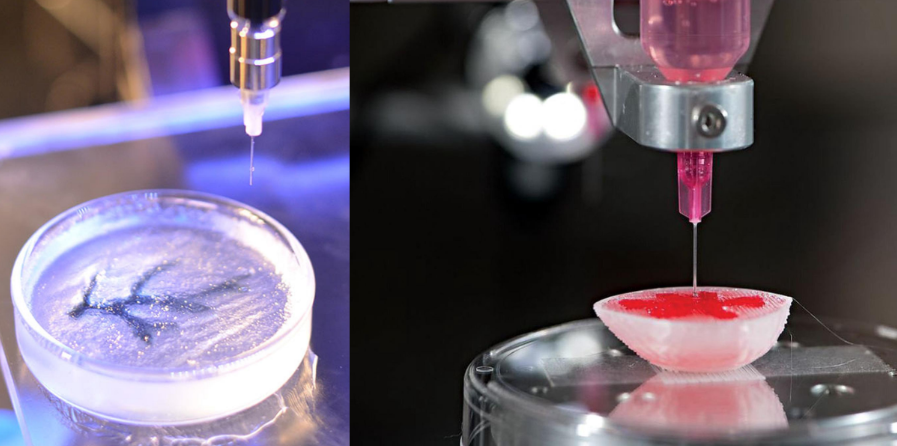Technology
Print Innovation: Navigating the Latest Trends in Digital Printing
Digital printing technology has transformed the overall printing landscape in recent years due to rapid technological advancements and adoption of latest trends. Digital printing has been a prominent process of printing in different industries and has surpassed the traditional technology of printing in terms of efficiency, versatility, and speed.
Digital printing is a process of reproducing digital images on a physical surface such as fabrics, papers, cardstock, and other materials and differs from traditional methods like offset printing. It relies on computer-based technology to transfer digital files directly to a certain printing substrate. Digital printing can also personalize and customize the printing piece. It helps in shorter setup times and has a quicker turnaround as compared to traditional printing methods. This process is more cost-effective for small runs and has a higher color accuracy. Moreover, the concept of digital printing has a lesser impact on the environment.
Latest Trends in Digital Printing
Digital printing is widely used across various sectors such as advertising and marketing, textile, packaging, publishing, photography, corporate and business printing, healthcare, and automotive among others. Here is a list of latest digital printing trends.
Personalization And Variable Data Printing:
Personalization in printing includes tailoring the content as per the specific needs, characteristics, and preferences. It may include a customized message, images, and various other elements. This is commonly used in marketing materials such as brochures, direct mail campaigns, and different promotional items. Here multiple and unique prints within a single print batch are made possible. Personalization in printing is mostly used by businesses as it helps in increasing engagement, leads to higher response rates for marketing campaigns, allows cost-effective customization, and is effective in tailored marketing messages. Thus, personalization and variable data printing are powerful tools in modern printing.
3D Printing and Additive Manufacturing:
3D printing and additive manufacturing is an innovative technology that helps in creating three-dimensional objects by layering different materials that are placed in a digital mode. Different types of 3D printing technologies including fused deposition modeling, stereolithography, and selective laser sintering are widely used in aerospace, automotive, healthcare, architecture, and construction for various purposes such as prototyping, customization, and others. This technology produces minimal material wastage and efficiently creates complex and intricate geometrics which are impossible with the traditional methods.
Augmented Reality in Printing:
Augmented reality in printing includes the integration of digital content into the printing materials to create an interactive and enhanced user experience. This overlays the computer-generated images, information, or images onto the physical world that is viewed through devices such as smartphones and tablets. This technique is widely used for different purposes such as interactive print advertising, product packaging, and labels, printed publications and books, business cards, and marketing collaborations, design visualization, and packaging prototypes.
Digital Textile Printing:
Digital textile printing is a modern method of printing patterns, designs, and colors directly on fabrics with the use of digital technologies. This process is well-known for its high precision, flexibility, and ability to produce vibrant and detailed designs on different textiles.
Digital textile printing allows printing of intricate and detailed designs that are beneficial for creating complex and custom patterns. This process does not require the creation of plates or screens resulting in reduced setup costs and time. In addition, it is environmentally friendly as it tends to produce less waste compared to the traditional method. This technology helps in on-demand, small-batch printing, enabling customization for each order.
Inkjet Technology:
Inkjet technology is a printing process that involves propelling droplets of inks onto paper, plastic, or any other substrates. This is one of the widely used printing technologies with varied applications such as personal desktop printers, industrial printing, and others.
Inkjet printing techniques like continuous inkjet and drop-on-demand are widely used and are more cost-effective for small runs. These are capable of producing high-resolution prints with different vibrant colors and sharp text and can handle a variety of media such as fabric, photo paper, plastics, and others.
UV Ink Printing:
UV ink printing is one of the modern printing technologies that uses ultraviolet curable inks for creating vibrant and durable prints on different materials. UV inks contain different special compounds known as photoinitiators. These are acrylic-based and provide adhesion to different materials forming a durable surface when cured. The immediate curing of UV ink is one of the major benefits of UV ink printing. This provides a high-quality print that is durable and environmentally friendly.
High-Resolution Printing Technology:
High-resolution printers are printing devices that can produce the output with clarity and high detailing. High-resolution printing technology is widely used in various advanced printers such as inkjet printers, laser printers, and photo printers along with photography printing, graphics and design, text and document printing, and fine art printing.
Digital Printing Market Scenario:
The global digital printing market is expected to register rapid revenue CAGR over the forecast period due to sustainable printing and development in the textile and packaging industries, rapid technological advancements in digital printing, growing demand for high-quality, cost-effective graphics, and the possibilities of incorporating AI, ML, and IoT into digital printing.
However, digital printing is cost-effective only for short runs and the initial investments for advanced digital printers can be higher. Other factors such as limited substrate compatibility, consistency of quality and color, speed and volume constraints can hamper overall market growth during the forecast period.
To cater to these hurdles, businesses, and leading printing companies are focused on developing innovative solutions and techniques. They are heavily investing in research and development activities to enhance existing technologies like inkjet and laser printing. These players are also adopting various strategies such as mergers and acquisitions, collaborations, and joint ventures to enhance their product base and strengthen their market position.




